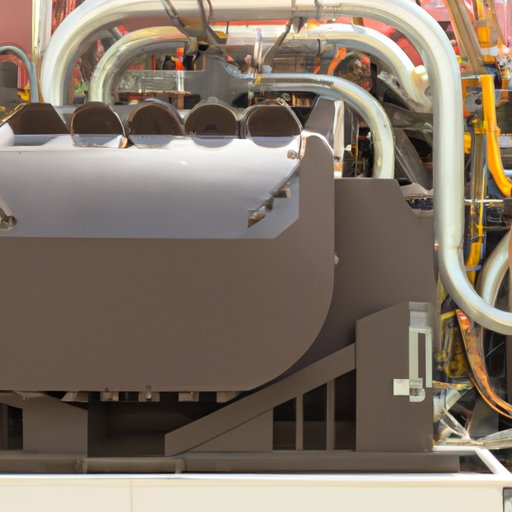Introduction
A furnace is a device used in homes and businesses to provide heat for interior spaces. It is typically powered by either electricity, natural gas, or oil. Furnaces are designed to heat entire buildings, rather than just one room. The benefits of owning a furnace include providing reliable heating, improved air quality, and energy efficiency.
Overview of Furnace Operation and Mechanics
Before understanding how a furnace works, it is important to understand the components of a furnace. A typical furnace includes a heat exchanger, burner assembly, blower motor, and control system.
The heat exchanger is a metal chamber that houses the fuel source. This is where the fuel is heated and converted into warm air. The burner assembly consists of the pilot light, igniter, and burners. This is what ignites the fuel and produces the heat. The blower motor is responsible for circulating the warm air throughout the home. Finally, the control system regulates the temperature of the home by turning on and off the furnace as needed.
Now that we understand the components of a furnace, let’s take a look at how they all work together. When the thermostat senses that the temperature has dropped below the desired setting, it sends a signal to the furnace to turn on. The furnace will then ignite the fuel source, which heats up the heat exchanger. The hot air produced is then circulated throughout the home by the blower motor. Once the desired temperature is reached, the furnace will turn off until the temperature drops again.
Different Types of Furnaces
There are three main types of furnaces: gas, electric, and oil. Gas furnaces are the most common type of furnace and use natural gas as the fuel source. Electric furnaces use electricity to heat coils or elements, which in turn produce heat. Oil furnaces use oil as the fuel source and are usually found in older homes.
Step-by-Step Guide to Furnace Maintenance and Repair
To ensure your furnace is working properly, it is important to perform regular maintenance. This includes changing the furnace filter regularly, checking for leaks, and inspecting the blower motor. Additionally, you should have a professional technician come out annually to inspect and service your furnace. This can help catch any small issues before they become larger problems.
If you encounter any problems with your furnace, there are a few troubleshooting tips you can try. First, check the thermostat to make sure it is set correctly. If the thermostat is not the issue, check the air filter to make sure it is clean. You may also need to check the electrical connections and circuit breakers to make sure everything is connected properly. If these steps don’t solve the problem, it may be time to call in a professional technician.
Conclusion
Furnaces are an essential part of many homes and businesses. They provide reliable heating, improved air quality, and energy efficiency. Understanding how a furnace works, the different types available, and how to maintain and repair one is essential for keeping your furnace running smoothly. With proper maintenance and care, your furnace can last for many years.
(Note: Is this article not meeting your expectations? Do you have knowledge or insights to share? Unlock new opportunities and expand your reach by joining our authors team. Click Registration to join us and share your expertise with our readers.)
